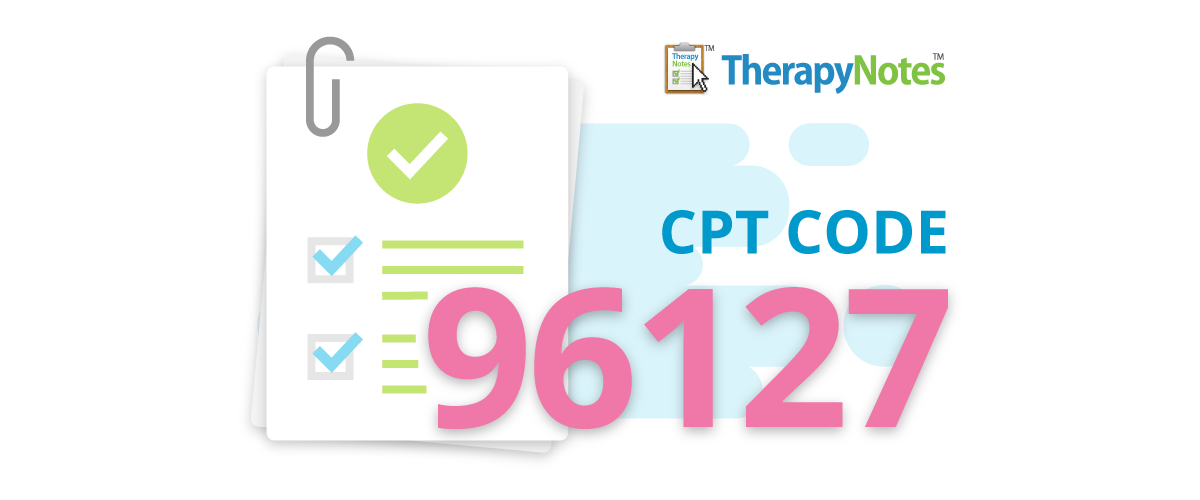How CPT Code 96127 Can Impact Your Income
By TherapyNotes, LLC on December 20, 2017

In a previous post, we gave an overview of each of the four MIPS reporting categories and highlighted that providing basic screening services for your clients as a regular component of care can help you meet many reporting requirements. Even better, if you're primarily seeking to avoid negative payment adjustments, the amount of screening you need to administer is negligible. What you may not know, however, is that there is a CPT code that may help you get even more out of these screenings.
CPT code 96127 was introduced in 2015 as part of the Affordable Care Act’s federal mandate which requires all insurance plans to include mental health services as part of the essential benefits. As formally defined by the American Medical Association (AMA):
96127- Brief emotional/behavioral assessment (e.g., depression inventory, attention-deficit/hyperactivity disorder [ADHD] scale), with scoring and documentation, per standardized instrument
CPT Volume 25, Issue 8, August 2015
96127 can be billed up to four times per client, per session. This means that you could administer, score, and bill for up to four separate instruments to each client every time they come in for a session. A brief survey of reimbursement rates across major insurance companies shows that you can earn an additional $4-$8 per instance of the code. Combining the 96127 code and MIPS payment adjustments, if a Medicare beneficiary comes in for 15 total sessions plus an intake, administering four instruments per visit and successfully reporting MIPS data could potentially increase your revenue for this client by nearly $400! Check with your payers to see how this code is reimbursed.
One challenge you may face when deciding to use CPT code 96127 is how you should get started with screening tools. Several MIPS measures focus on depression screening using the PHQ-9 or screening for alcohol use with the AUDIT. For access to these and other free screening tools, check out the Substance Abuse and Mental Health Services Administration's (SAMHSA) Screening Tools resources. Many of these tools require very little training to use, and some may be administered by trained non-clinical staff or even self-administered by the clients themselves.
Administering these screening tools and capturing that data could be a significant driver of additional income. Plus, since many third-party payers are moving towards outcome-based reimbursement models, you can get ahead of the curve by having data-driven outcomes readily available.
Sources: APA Practice Organization, Do you know about these 2015 coding changes?; APA Practice Organization, Essential health benefits final rule provisions are favorable for mental health care
* The content of this post is intended to serve as general advice and information. It is not to be taken as legal advice and may not account for all rules and regulations in every jurisdiction. For legal advice, please contact an attorney.
Get more content like this, delivered right to your inbox. Subscribe to our newsletter.
More Content You'll Enjoy
The Best Practice Fusion Alternative for Mental Health

Supercharge your Documentation with TherapyFuel!
